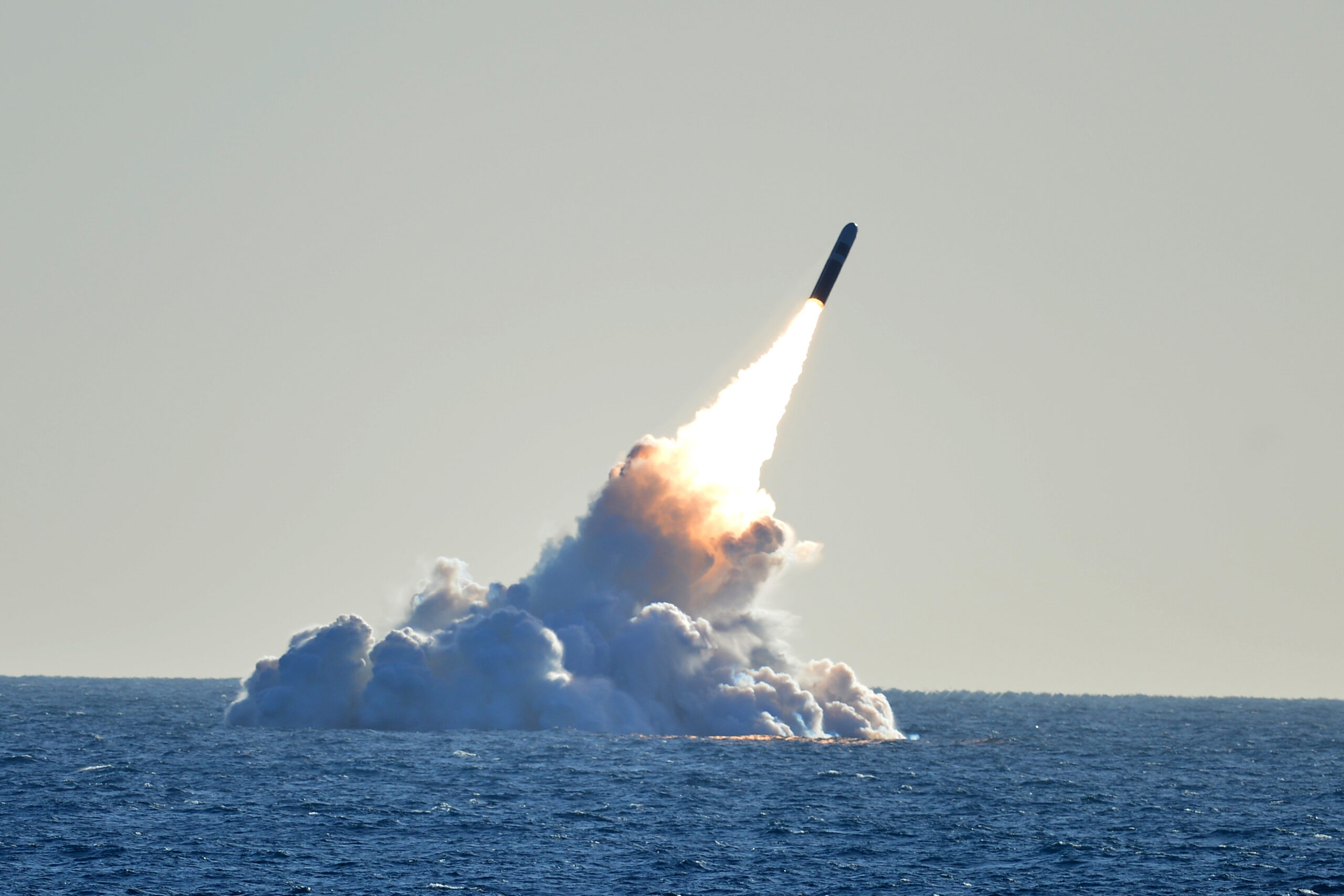
Members of the House Armed Services Committee propose to withhold funding for retirement of the W76-2 warhead unless the military and National Nuclear Security Administration can prove there is no need for the lower-yield submarine-launched weapon.
The bill would also withhold 20% of travel funding for National Nuclear Security Administration (NNSA) Administrator Jill Hruby until she delivers reports required by Congress in the two previous bills: one on the modernization of the Pantex Plant in Amarillo, Texas, the central service center for U.S. nuclear weapons, and another on NNSA “management and operation contract risk mitigation.
Both proposals were included with bill language marked up Tuesday by the House Armed Services strategic forces subcommittee and sent to the full committee for consideration June 21 as part of the annual National Defense Authorization Act (NDAA) for fiscal year 2024.
The bill “would prohibit the National Nuclear Security Administration (NNSA) from reconverting or retiring W76–2 warheads,” the proposal reads. “It would provide a waiver if the Administrator for Nuclear Security, in consultation with the Secretary of Defense and the Chairman of the Joint Chiefs of Staff, certifies to the congressional defense committees that Russia and China do not possess similar capabilities and that the Department of Defense does not have a valid military requirement for the W76–2 warhead.”
The W76-2 is a lower-yield — between five and seven kilotons, the Washington-based nonprofit Federation of American Scientists estimates — variant of the W76-1 warhead that rides on the Navy’s UGM-133 Trident II submarine-launched ballistic missile. Neither the Pentagon, White House nor the NNSA have announced plans to retire or dismantle any W76-2 warheads. The same language on limiting funding for retirement of the warhead was included in the 2023 NDAA.
The Biden administration has cited the existence of the W76-2 as a reason not to develop a submarine-launched cruise missile, or SLCM-N, that would carry a lower-yield W80-4 warhead. In its 2022 Nuclear Posture Review, the administration decided to cancel SLCM-N “after determining that it would be a redundant capability in light of the W76-2.”
SLCM-N supporters in Congress, the military and elsewhere argue that, armed only with large-yield thermonuclear weapons, the U.S. might not respond for fear of triggering nuclear war. Some of these people also say that W76-2, owing to its ballistic flight trajectory, is a complement to and not a replacement for a cruise missile, which can fly lower and evade radar.
Puts and takes; cuts to stockpile research
The 2024 NDAA up for consideration in the House next week also bumps funding for plutonium pit production, pays for development of the sea-launched cruise missile warhead and other nuclear weapons modernization programs.
Department of Energy defense nuclear programs at the NNSA largely avoided budget cuts when Congress passed — and President Joe Biden signed — the “Fiscal Responsibility Act of 2023,” the bipartisan deal to cut federal spending and raise the U.S. debt ceiling, earlier this month.
But to get extra funding for NNSA weapons programs, House authorizers have proposed cutting the agency’s Stockpile Research, Technology and Engineering account, which funds personnel and equipment used to maintain the current nuclear weapons arsenal without resorting to explosive testing.
The Savannah River Plutonium Processing Facility received a modest increase of $142 million to a nearly-even $1 billion from a proposed $858 million. An integral part of the NNSA’s goal of producing 80 plutonium pits per year in the 2030s, Savannah River in South Carolina will make at least 50 of those pits at the facility. The other 30 will be produced by the Los Alamos National Lab in New Mexico by 2030 or sooner, the agency hopes.
Savannah River’s Tritium Finishing Facility, which will replace the old H-area manufacturing facility, also received $37 million in HASC’s version of the bill. The White House requested no funding for the next-generation tritium plant.
High explosives production at the Pantex Plant in Amarillo, Texas, received a modest bump in funding from the committee, which granted it $83 million where the initial NDAA requested no funding for the fiscal year that begins Oct. 1.
The draft bill includes $70 million for development of a sea-launched variant of the W80-4 warhead, which would be carried by a sea-launched cruise missile. The Biden administration, which wants to cancel the SLCM-N, zeroed out funding for the weapon which it considers redundant to the W76-2 low-yield, submarine-launched intercontinental ballistic missile warhead. It is the second year the White House has proposed blanking the cruise missile development program.
These increases would be offset largely by $130 million in cuts to Stockpile Research Technology and Engineering, leaving the account with a little more than $3 billion, compared with the $3.19 billion requested.
The committee’s NDAA would also slash dismantlement and disposition of existing nuclear weapons by $17 million to $36.7 million, compared with the requested $53.7 million, Non-proliferation and arms control programs would also come in $25 million lower in the committee’s bill, at $187 million from a requested $212 million.
The subcommittee’s mark also added another item of homework to Hruby’s plate. It includes a requirement that within 120 of the passage of the final NDAA, the NNSA administrator provide Congress with a uranium enrichment strategy “dedicated to satisfying Department of Defense requirements.”